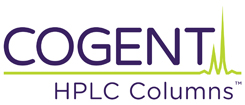Back flushing an HPLC column can be done to remove contaminants from an HPLC column without damaging it.
There are two types of contaminants that can be removed by back flushing:
The first type is particulate matter. This can be small particles of dust of other debris and can come from many different sources such as the sample or HPLC system components. These particles are generally larger than the column inlet frit pores and therefore become trapped. By reversing the column direction, these particles are free to wash out with the eluent. Be sure that the column outlet is disconnected from the rest of the system or the particles may end up in the detector and cause damage. These particles are usually held up by the inlet frit which causes a disrupted flow pattern.
The second type is “chemically adsorbed contaminants”. These are strongly retained compounds that usually build up at the head (first 2mm) of the column. These can be removed by flushing with a strong eluting solvent. The types of contaminants can come from many sources as well, but the most common is when a complex sample matrix is injected (e.g. plasma, urine, etc.).However, if you do not reverse the column direction, these contaminants will have to travel through the entire length of the column before they are washed out which may not ever happen.
The packed bed on most modern HPLC columns is sufficiently robust to allow for flow in either direction without disrupting the packed bed but by back flushing, the contaminants have to travel a much shorter distance to be removed and more likely to be removed.
All Cogent columns can be back flushed if proper technique is used. You should check with your column supplier to be sure your column can be back flushed if you are not using Cogent columns.


